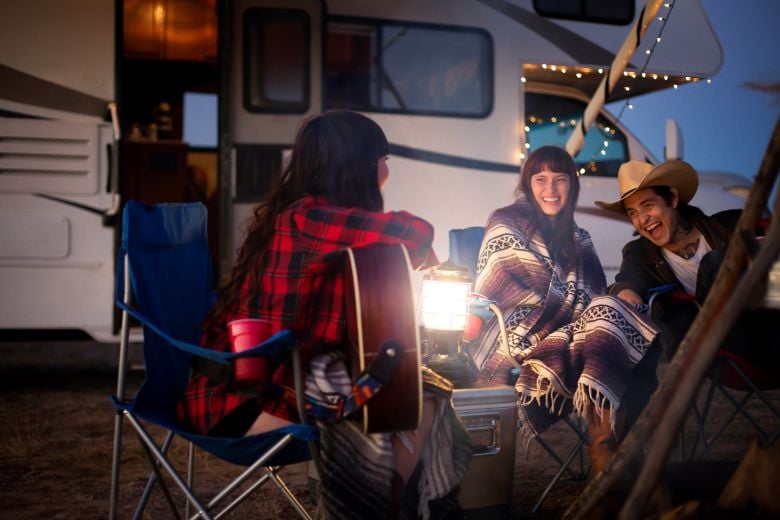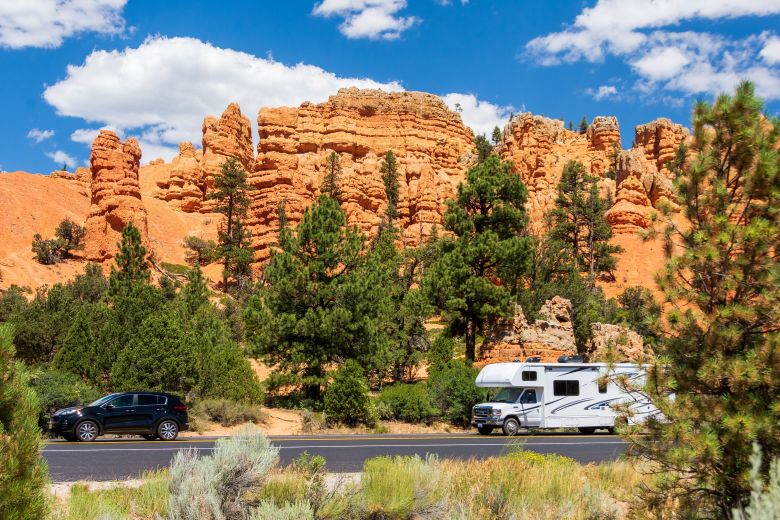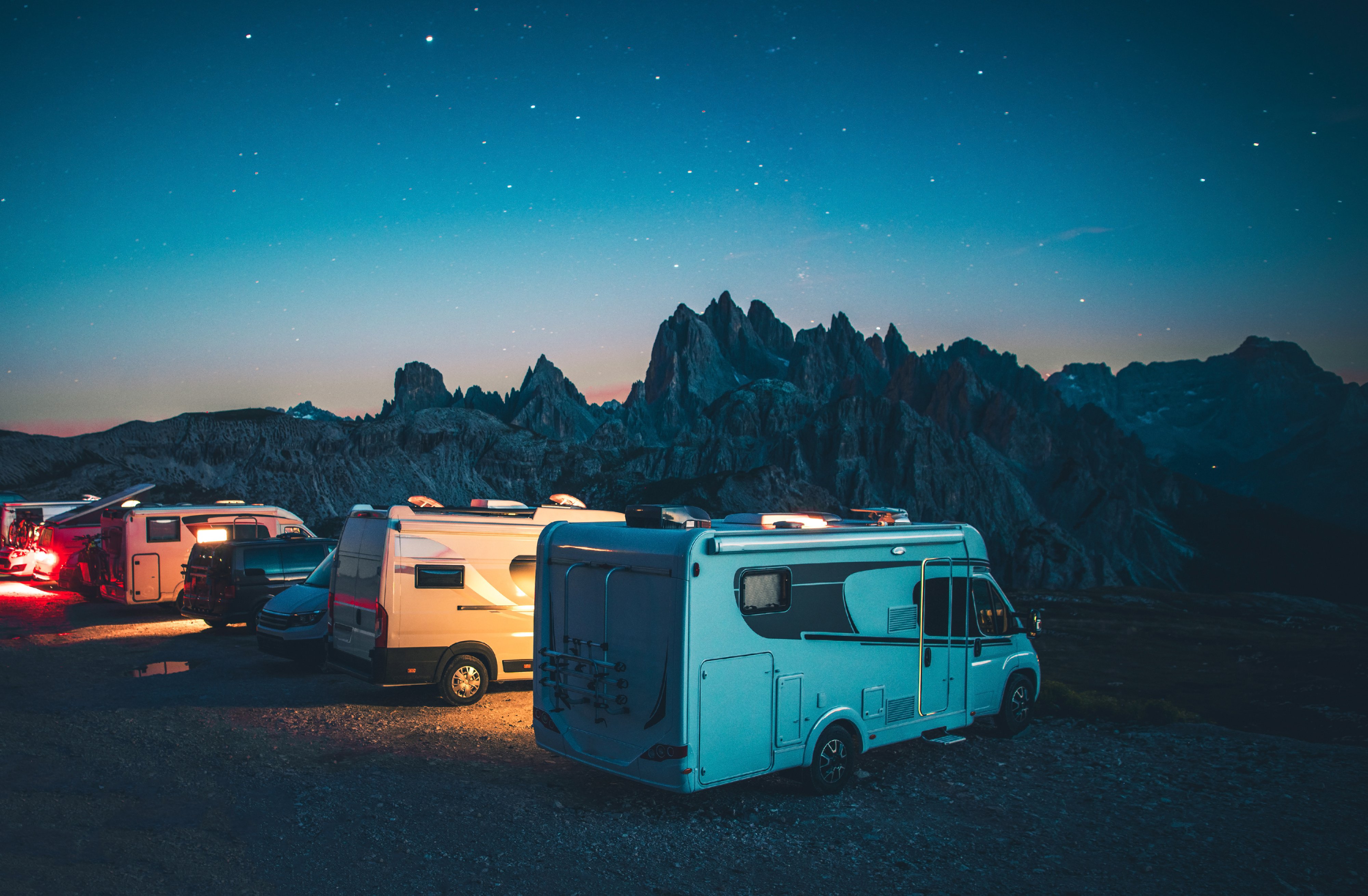
Top 10 Tips for RV Newbies
- Vehicle Maintenance
- PEAK
- March 3, 2025
New to RVs? Read along to learn the top 10 RV tips for newbies.
Picking up momentum from the #VanLife hashtag craze, recreational vehicles (RVs) have rocketed to record popularity. RVing has made major gains with a new generation of road adventurers, getting massive traction on social media and attracting millions to the lifestyle.
In 2021, Go RVing conducted the most detailed study of RV ownership ever performed. The results surprised even longtime industry insiders: RV ownership spiked by 62% from 2001–21, with more than half (51%) of current owners being under age 55 and nearly one-quarter (22%) belonging to the 18–34 age group.
Interest in RVing spiked during the COVID-19 pandemic, and has shown no signs of slowing down. If you're feeling the call of the open road, start by reviewing these 10 practical tips for RV newbies.


Always check your tires before a trip
As any RVer who's had a flat will tell you, getting stranded with tire trouble is a huge headache. Flat tires aren't always avoidable, but inspecting your tires before hitting the road could save you a lot of hassles.
Experienced RVers recommend doing a tire check every time you head out for the season or on a longer trip. Here's what to do:
- Inspect the tread depth. Many RV tires have wear indicators, but you can also use the penny test. Stick a penny into your tire tread with the head facing down. If you can see the top of Lincoln's head, it's time for new tires.
- Check the pressure. Use a pressure gauge to ensure every tire meets the pounds per square inch (PSI) ratings indicated in your owner's manual.
- Look at tread wear patterns. Uneven tread wear can indicate axle or bearing problems. If you notice it, have your vehicle professionally inspected.
Know your RV height clearance
Electricity wires, highway overpasses, and low bridges are all major hazards for RVers. Watch closely for them as you drive, and stay alert for signage that specifies clearance heights.
Memorize your clearance height so you don't have to think about it as you're hurtling along. You can also write it down on a sticky note or label, then place it somewhere easily visible so you can double check if you need to.
Turn safely
For RVers, tight turns are a fact of life. Knowing your tail swing will help you make those turns with greater ease and confidence.
Here's the rule of thumb: for every 3 feet of towing length beyond your rear axle, your trailer will swing out 1 foot during a turn.
Avoid turning harder than necessary, especially when roadside obstacles are present. If in doubt, use a spotter to help you make your turn.
Practice will also help you learn exactly how your vehicle behaves when executing turns. Until you feel comfortable, try to stick to routes with fewer sharp turns.
G.O.A.L.
G.O.A.L. stands for "get out and look." It's a mantra that veteran RVers live by. Not sure how much side clearance you have while backing into a parking spot? Get out and look.
Will your RV clear those low-hanging wires? Get out and look.
How close is the tail end of your trailer to that tree, bush, or cabin? Get out and look.
You get the picture. When in doubt: G.O.A.L.
Limit your highway speed
As you learn more about how to drive an RV, you'll notice a general consensus that 65 miles per hour is the maximum safe speed. Keep right on the highway, maintain safe following distances, and expect that other motorists will be constantly passing you.
If you ever notice your trailer swaying, immediately activate your trailer brake. This is important at any speed, but especially on the highway.


Use exact addresses
When you're heading to a new destination, always enter an exact address. Inexperienced RVers sometimes just enter the city into their navigation system, only to find themselves stuck in a tight corner of an unfamiliar place.
Also, remember that Google Maps isn't the only game in town. Developers have created navigation apps specifically for RVs and road trips.
Try Roadtrippers to connect with fun and unique attractions along your route. Apps like RV Life's Trip Wizard and RV Safe GPS let you plan custom routes tailored to your vehicle's size, specifications, and restrictions.
Stay stocked up on DEF
Diesel-powered RVs are popular, but their engines generate harmful emissions. To control these, you'll need to use diesel exhaust fluid (DEF) to break them down into neutral chemicals like hydrogen and water.
PEAK's product lineup includes BlueDEF for all-purpose use and BlueDEF Platinum for premium performance.
Pro tip: Buy two boxes of DEF at a time so you can use one and stash the other. That way, you'll never run out in a pinch.
Also, never pour DEF into your diesel tank. It belongs in a specially labeled DEF reservoir, which you'll find in your engine. Pour the fluid straight from the box into your DEF reservoir to keep the job clean and tidy.
Chock and check before disconnecting
RV tire chocks are essential for stopping your trailer from rolling away. You should use them without exception every time you disconnect your trailer, no matter how level the terrain you're parked on might seem. Always place your chocks before disconnecting.
There's another check you should always make before unhooking your trailer: if you're stopping at an RV park, make sure your power cable can reach the nearest electricity source. You can save yourself a lot of labor — and curse words — by adopting this good habit.
Gas up while disconnected
Some gas stations can easily accommodate vehicles with trailers. Others … not so much.
By fueling up while your trailer is disconnected, you'll sidestep the unwelcome surprises that can happen when you're running on fumes and the only available gas station doesn't have room for you.


Save winter for later
Winter camping can be a lot of fun, especially if you're into skiing, snowboarding, hiking, and the like. Steering an RV or trailer along slippery, snowy, icy, and mountainous roads in low-visibility winter conditions is a lot less fun.
If you're just getting started, it's much safer and easier to confine your RVing to the warm-weather months. Winter driving is something you should only try once you've built up the confidence that comes from years of experience.
Bonus winter tip: Winterize your RV with antifreeze
Whether you're planning to use your RV in the winter or park it until spring, it's critically important to winterize the vehicle’s plumbing lines. This will reduce your chances of developing a leak that could lead to costly damage.
Here's what to do:
- Disconnect all water sources and drain your RV's water tank. Run all plumbing fixtures in your vehicle (showerheads, faucets, hot water tank, toilet, etc.) until no water remains in the lines.
- Head to your local RV dump station to drain your vehicle's greywater and blackwater tanks. Then, flush and clean them so they'll be ready for next season.
- Configure your internal fluid lines to bypass your RV's water heater. You're about to fill your lines with antifreeze, and you don't want your antifreeze to drain into your hot water tank.
- Put antifreeze rated for use in RVs into your freshwater tank. Run both your hot and cold water faucet until you see antifreeze coming out. This ensures the antifreeze fluid has fully circulated through your system.
- Flush the toilet. This will circulate the antifreeze into your blackwater tank to complete the process.
To complete step four, you'll need about 2–3 gallons of antifreeze. We recommend PEAK RV and Marine Antifreeze, which is specially formulated for winterizing your vehicle.
Stay safe and have fun
The PEAK Auto family shares the spirit of discovery and adventure that sparked your interest in RVing, and we're here to support your journey with helpful resources and top-performing products.
Before you hit the road, review our ultimate road trip checklist and print off a copy to bring with you. If you're looking for destinations, our Going Places series can inspire you — especially if you're headed through Indiana, Maine, Ohio and Pennsylvania, New York state, or Virginia.
Last but not least, be sure to stock up on your RV supplies and PEAK essentials. Replace worn-down wipers with heavy-duty PEAK blades, upgrade your headlights, and grab an extra jug of windshield wash to keep a clear view during your travels.

